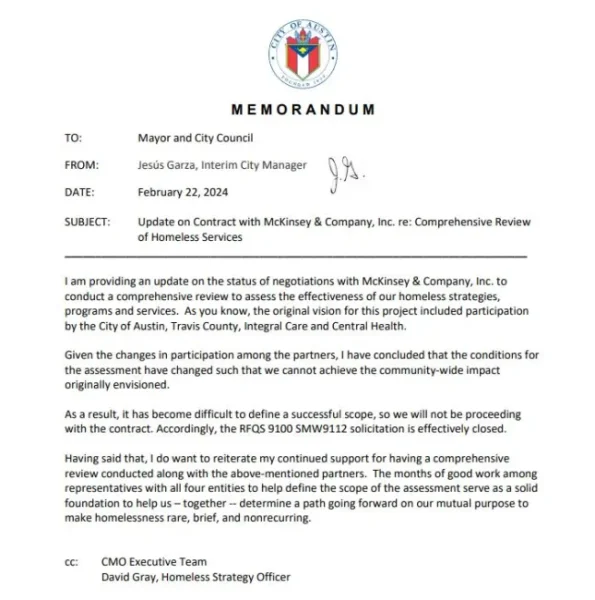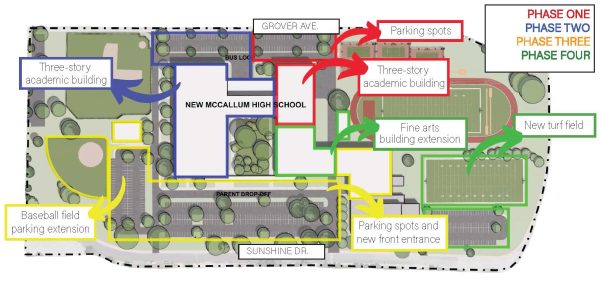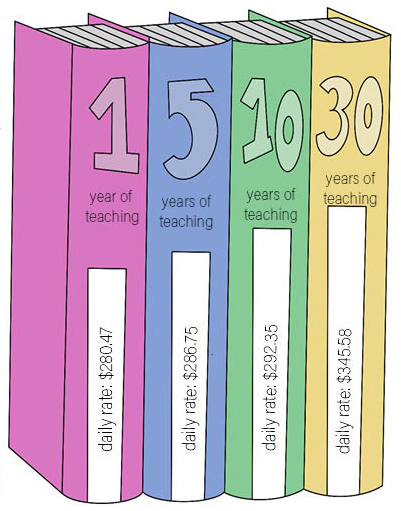Population shifts threaten under-enrolled schools
ANALYSIS: By accelerating enrollment decline, faculty turnover, gentrification endangers East Austin schools
January 12, 2019
In the last few years, many of America’s large cities, including Austin, have been experiencing a phenomenon known as gentrification. Gentrification is the process of richer people moving into a poorer area and raising the surrounding property values, which causes many original residents to leave because they can no longer afford their homes.
In East Austin, where gentrification is prevalent, families are being pushed out and replaced by younger, higher-income, generally childless people, which has led to lower school enrollment.Partly as a result of decreased enrollment, many schools are at risk of being shut down, and schools that will remain open fear a loss of funding.
Some schools in Austin have been able to stay open because of bilingual education programs.
“You had a community [with] high numbers of Latino families,” said Professor Dan Heiman from the department of teacher education and administration at the University of North Texas.
Bilingual education programs were created to allow Spanish speakers to get an education while being able to learn English. As more native Spanish speakers were pushed out, however, the programs shifted to focus on the higher-income, native English speakers.
“While dual language bilingual programs used to draw new students and keep the school open, this often occurred at the expense of the students for whom the programs were designed,” said Professor Rebecca Callahan from the University of Texas at Austin.
“I can predict within the next year or two that we are going to have schools close and collapse into themselves,” said Kristina Gurrierez, a bilingual and dual language education professional development specialist for AISD.
Gutierrez has worked in AISD for five years, and over this time has witnessed the effects of gentrification on poorer schools.
“Schools that are usually filled to capacity are going from having 600 students, to 200 students and some of them might close because of that,” Gurrierez said.
The drop in enrollment is largely due to population movement caused by gentrification. Because gentrification leads to higher living costs, families with school-aged children have had to move out. As these families leave Austin, enrollment in AISD schools goes down.
Schools in gentrified areas are losing not only students, but staff as well.
“Teachers aren’t really able to live in the area,” Gutierrez said.
Teachers who lived in or near the district possessed valuable knowledge of the community and its members. As they depart, that knowledge is lost. The combination of declining enrollment and increased cost of living combine to push teachers out of the schools where they are needed most.
Another side effect of having fewer students and teachers is that classes are consolidated, which makes it harder for students to get individual attention from remaining teachers who have more students to teach.
“Instead of having four classes, you only have two very full classes,” Gutierrez said.
This means that each teacher has to work with more children, and as a result can’t spend as much time with each student.
An underlying question arises when looking at these changes: What can be done about it?
“Let’s make sure that we provide transportation for students who don’t live in the area,” Heiman said.
AISD and the city of Austin have been exploring affordable housing and other accommodations for lower-income families. These discussions are in very early stages, however, and most likely won’t be realized in the short term.
“I want to be hopeful,” Heiman said.
For now, that’s the most that can be done.






![With the AISD rank and GPA discrepancies, some students had significant changes to their stats. College and career counselor Camille Nix worked with students to appeal their college decisions if they got rejected from schools depending on their previous stats before getting updated. Students worked with Nix to update schools on their new stats in order to fully get their appropriate decisions. “Those who already were accepted [won’t be affected], but it could factor in if a student appeals their initial decision,” Principal Andy Baxa said.](https://macshieldonline.com/wp-content/uploads/2024/04/53674616658_18d367e00f_o-600x338.jpg)










Evelyn • Jan 17, 2019 at 9:45 pm
Very interesting article, and definitely very important to know about. I do wish there were quotes from the teachers/students/parents that this problem actually affects, but overall, pretty well-written!
Tobin Wine • Jan 14, 2019 at 2:08 pm
This could be less of a problem if the problems with the recapture program and the debt AISD has are fixed